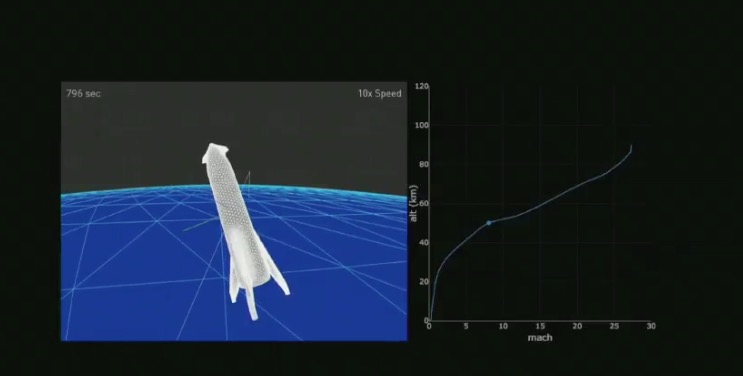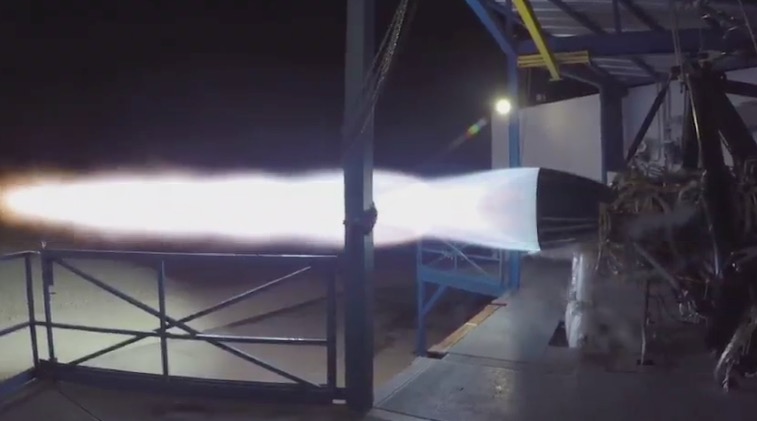Today, Elon Musk and SpaceX are sharing more details about their lunar mission, including which private citizen is going to be lucky enough to be the first person who is going to the moon with SpaceX. This post is a live recap with updates on what is shared during the event. We’ll be updating this post as the event continues, so please refresh for the most recent updates.
Going into the event, we know that the trip will take place on SpaceX’s BFR (Big Falcon Rocket), which will also be revealed during the webcast from Hawthorne, California. This is being called the BFR Lunar Mission. Originally SpaceX planned for a trip around the moon to be done with the Dragon and the Falcon Heavy. But during the Falcon Heavy’s inaugural launch, Musk announced that the manned trips were now going to be handled by the BFR instead.
On Twitter Thursday, SpaceX representatives noted: “SpaceX has signed the world’s first private passenger to fly around the Moon aboard our BFR launch vehicle—an important step toward enabling access for everyday people who dream of traveling to space. Find out who’s flying and why on Monday, September 17.”
The BFR system was first unveiled in 2016, with hopes that it will be ready for a crewed flight to Mars in 2024.
Read on for a recap of tonight’s event.
Musk Began with the History of SpaceX
At the beginning of the event, Elon Musk said that we need to be a multi-planet civilization so we can extend life beyond Earth. It’s not known how long the opportunity will be available, so we should take action as soon as possible, he said.
“I want to emphasize it’s multi-planetary, not a single planet but somewhere else,” he said. He wants to have life on Mars, the Moon, Venus, maybe the moons of Jupiter, and ultimately beyond the star system.
“There are so many things that make people sad about the future… but becoming a space-faring civilization…makes you glad to be a human being,” he added. “I hope that people will see it that way. That is the intent of BFR, to make people excited about the future.”
Musk said that the fourth attempt reached orbit in September 2008, almost 10 years ago, and if they had not reached orbit on the fourth try, then SpaceX would not have existed. “That was a very tough launch emotionally,” he said. Then not long after that, they won their first major NASA contract (the space station servicing contract.)
Next, Musk talked about the launch of Falcon Heavy earlier this year and what led up to Heavy’s launch. He talked about the launch of Starman and how they were able to have a successful launch and achieve a full reusability of the boost stage.
“It’s an enormous change over the course of 10 years,” he said. “… How many people predicted in 2008 that SpaceX would have done these things by 2018? I think zero… I’m not sure it’s zero, but I’m not aware of anyone who would have made that prediction, including me.”
Musk then talked about sending a car to Mars. He said it was bizarre, but they wanted to do something fun that people could be interested in. Asimov’s Foundation series, he said, was an inspiration for SpaceX.
Elon Musk Next Updated Information About BFR
Next, Musk talked about BFR, saying it was different from what was presented a year ago. It’s 118 meters long and the payload is about 100 metric tons to the surface of Mars. BFR is intended to be an interplanetary transport system that can travel from Earth to anywhere in the solar system, ultimately. The payload section was increased to over 1000 cubic meters, and there are forward and rear actuated fins. He said BFR is counterintuitive in how it flies.
He said the BFR operates more like a skydiver than an aircraft. Nearly the entire time it’s re-entering, it’s just trying to brake, he explained, trying to shed velocity while sharing the force around the greatest surface area possible.
He shared simulation of BFR re-entering, which you can watch in the video at the top of this article.
BFR is now being built, Musk said. It’s 9 meters in diameter and is quite enormous. They’ve built the first cylinder section of the BFR prototype, and will be building the domes and engine section soon. The Raptor engine is approximately 200 ton thrusters. A picture is below:
You can learn more technical details about the raptor engine in the video at the beginning of this story.
“SpaceX team has done a phenomenal job in the design of this,” Musk said, to a lot of cheering. “This is a stupidly hard problem and SpaceX engineering has done a great job with this design. … It took us a long time to even frame the question correctly… (but once we could) the answer flowed once the question could be framed with precision.”
Next is BFR’s lunar trajectory:
Musk said they would do a bunch of test launches first before anyone is put on board.
Musk added that next year they would begin transporting astronauts to and from the space station, and are developing a Starlink as a source of revenue.
“Any customers for BFR are incredibly helpful in funding the development of the rocket,” he added.
Elon Musk Introduced Yusaku Maezawa as the First Paying Customer
Elon Musk then introduced Yusaku Maezawa as the first paying customer for BFR. Maezawa is incredibly excited about this opportunity.
He wants to bring artists with him to the moon, so they can create works related to seeing the moon.
Maezawa said that promoting world peace is his lifelong dream.
“Ever since I was a kid, I have loved the moon,” he said. “…That is why I have not passed up this opportunity… But I did not want to have such a fantastic experience by myself. So I want to share this experience with as many people as possible. … That is why I choose to go to the moon with artists.”
So he’s created a project called #DearMoon. In 2023, he would like to invite six to eight artists from around the world to join him on a mission to the world, and they’ll be asked to create something when they return, inspiring dreams and hope.
They Ended with a Q&A Section & Musk Said They Might Be Doing the First Orbital Flight in About Two to Three Years
After Maezawa’s amazing announcement, he and Elon Musk stood on stage together for a Q&A section.
Musk said this is the final iteration in terms of broad architectural changes for BFR and BFS (acknowledging that designs have changed a couple times.)
He said they’ll be doing half their test flights next year and then high-altitude, high-velocity flights with the ship in 2020, along with starting to test the booster. “If things go well, we could be doing the first orbital flight in about two to three years. We’ll do many such test flights before putting any people on board,” Musk said. “I’m not sure if we will actually test a flight around the moon or not, but we’ll probably try to do that without people before sending people. That would be wise.”
He said that Maezawa chose SpaceX, not the other way around.
“He was the best adventurer,” Musk said about why they chose him. “He stepped forward to do it. We’re honored that he would choose us. This is not us choosing him. He’s a very brave person to do this. Because he’s paying a lot of money — we’re not disclosing the amount — …that will help with the development of the ship and booster…”
Although how much Maezawa paid is not being revealed, Musk did share that the artists traveling with him won’t have to pay a thing.
When Musk was asked how he can be sure about the 2023 deadline, he emphasized that they aren’t sure. “You have to set some kind of date that is kind of like the ‘Things Go Right’ date.” Then you have reality, he added, and things do go wrong. So 2023 is the approximate date if things go right, but it could be pushed back.
The short hops will be done from the Texas site near Brownsville. But ultimately, they might even launch from a floating platform, Musk added. He later said that he hopes the ship will have fun things onboard for the passengers.
“Safetywise, this will be built upon our work with the NASA Crew Dragon design,” he said. They’ll also have a closed-loop oxygen/CO2 system and a closed-loop water system for a long journey.
“We’ve learned a great deal from NASA, and I want to give another word of appreciation to NASA,” Musk said. “NASA does remain our primary priority, along with national security space missions.”
Musk later said that his estimated development costs for BFR will probably be $5 billion. “I don’t think it’s more than 10, and I don’t think it’s less than 2,” he said.
In answer to a later question, Musk said that he thought it would be great to have a moon base.



